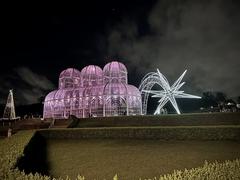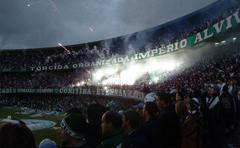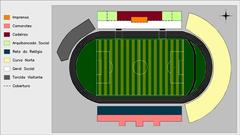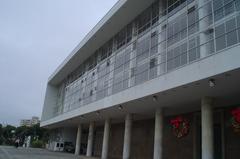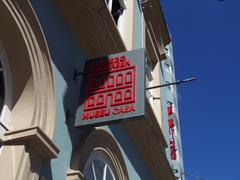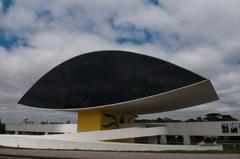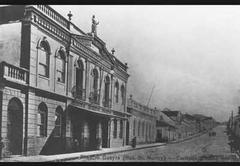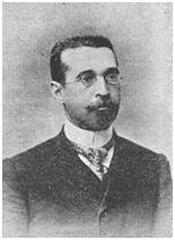Praça do Japão, Curitiba: Visiting Hours, Tickets, and Historical Sites Guide
Date: 04/07/2025
Introduction
Praça do Japão, located in Curitiba, Brazil, is more than just a picturesque urban park. It stands as a monument to the enduring legacy and vibrant presence of the Japanese-Brazilian community—a harmonious blend of tradition, cultural exchange, and urban green space. Established in the early 1960s and designed to reflect the tranquility of classical Japanese gardens, this square is a living tribute to Japanese immigrants who have shaped Curitiba’s history and cultural landscape (Turismo Curitiba).
This comprehensive guide explores Praça do Japão’s origins, symbolic features, practical visitor information, and its ongoing role as a center for cultural celebration and integration. Whether you seek historical insight, cultural immersion, or a peaceful stroll under cherry blossoms, this guide will help you make the most of your visit.
Table of Contents
- Introduction
- History and Japanese Immigration to Curitiba
- Design, Symbolism, and Monuments
- Cultural Events and Community Activities
- Practical Visitor Information
- Praça do Japão and the Nipo-Curitibana Route
- Seasonal Highlights and Events
- Travel Tips
- Frequently Asked Questions (FAQ)
- Plan Your Visit
- References
History and Japanese Immigration to Curitiba
Japanese immigration to Brazil began in 1908, but Curitiba’s Japanese community traces its roots to 1910, when the first families arrived and began farming on the city’s outskirts (Bem Paraná). Ryu Mizuno, hailed as the “Father of Japanese Immigration,” played a pivotal role in establishing Japanese agricultural practices in the region by 1924. The rapid growth of the community led to the formation of important cultural and social associations, anchoring Japanese traditions in Curitiba’s urban development.
To honor these pioneering families and the contributions of subsequent generations, Praça do Japão was inaugurated in 1962 in the Água Verde neighborhood. Over the decades, it has evolved into a cultural symbol and gathering place for both locals and tourists.
Design, Symbolism, and Monuments
Praça do Japão’s landscape, inspired by the gardens of Kyoto, features elements that symbolize the friendship between Brazil and Japan and the values of peace, respect, and renewal (CK Turistando):
- Cherry Trees (Sakura): Thirty sakura trees, a gift from the Japanese Imperial government, bloom each winter (typically July–August), creating a spectacular display that draws visitors for hanami (flower viewing).
- Japanese Portal (Torii): The torii gate, added in 1993, marks the transition from the city’s bustle to a peaceful cultural space.
- Stone Lantern (Ishidoro): Donated by Hyogo Prefecture, this lantern commemorates Japanese immigration milestones and symbolizes enduring friendship (MCities).
- Buddha Statue: Set in one of the lakes, the statue represents spiritual heritage and Curitiba’s sister-city ties with Himeji, Japan.
- Escultura da Paz (Peace Sculpture): Crafted by Baku Inoue, this granite monument is a call for peace and a memorial to Hiroshima.
- Memorial da Imigração Japonesa: Modeled after Kyoto’s Golden Pavilion, this memorial houses the Hideo Handa Library—a resource for Japanese and Portuguese literature and cultural programming (Sarapateando).
The garden’s six artificial lakes, stone bridges, and carefully pruned shrubs further evoke Japanese aesthetic principles.
Cultural Events and Community Activities
Praça do Japão is a dynamic cultural hub, hosting year-round events that celebrate Japanese-Brazilian heritage:
- Tea Ceremonies: Held at the Casa de Chá (Tea House) every Thursday (9 a.m. to 4 p.m.), these ceremonies introduce visitors to Japanese hospitality and ritual (CK Turistando).
- Workshops: Regular origami, calligraphy, ikebana, and haikai poetry sessions invite hands-on participation.
- Festivals: Annual highlights include Haru Matsuri (Spring Festival), Hana Matsuri (Festival of Flowers), and Imin Matsuri (Immigration Festival), featuring music, dance, martial arts, and food fairs (Bem Paraná).
- Family Programming: Storytelling circles and cross-cultural workshops for children and families are hosted by the Hideo Handa Library (Bem Paraná).
The square’s accessibility and inclusive programming make it a welcoming space for everyone.
Practical Visitor Information
Hours and Admission
- Park: Open 24 hours a day, seven days a week.
- Cultural Facilities: Memorial da Imigração Japonesa and Hideo Handa Library are generally open Tuesday to Sunday, 9:00 a.m. to 6:00 p.m. (hours may vary during events).
- Admission: Free for all areas. Some workshops or special exhibitions may require prior registration or a small fee (Rede Globo).
Accessibility
- Wheelchair friendly: Paved, gently sloped paths.
- Ramps and tactile paving provide ease of movement for mobility and visually impaired visitors.
- Service animals are welcome, and staff at the memorial can assist guests with special needs.
Facilities & Amenities
- Restrooms: Public restrooms are located near the main entrance on Avenida Sete de Setembro.
- Wi-Fi: Free public Wi-Fi is available (Prefeitura de Curitiba).
- Benches and Shaded Areas: Ample seating throughout the park.
- Nearby Cafés and Bakeries: Refreshments available along Avenida Sete de Setembro and Rua Bispo Dom José. During festivals, food stalls offer Japanese delicacies (Gazeta do Povo).
Guided Tours
- Guided tours are occasionally offered during festivals or by local cultural organizations—check schedules with Turismo Curitiba.
Photographic Spots
- Best Views: Torii gate, cherry blossom trees, stone lantern, Buddha statue, and reflective ponds.
- Photography Tips: Early morning or late afternoon offers ideal lighting, especially during cherry blossom season (July–September).
- Commercial Shoots: May require authorization from the city’s parks department (Instagram).
Praça do Japão and the Nipo-Curitibana Route
As a cornerstone of the Nipo-Curitibana Route, Praça do Japão leads visitors through a curated trail of sites celebrating Japanese heritage in Curitiba, including Praça Himeji, Praça Ryu Mizuno, and related cultural centers (Bem Paraná). This route deepens understanding of the Japanese community’s impact and supports multicultural tourism.
Seasonal Highlights and Events
- Cherry Blossom Season (July–September): The square transforms into a sea of pink and white blossoms, perfect for hanami and photography.
- Annual Festivals: Haru Matsuri, Hana Matsuri, and Imin Matsuri feature performances, food, and cultural exhibitions.
- Weekly Tea Ceremonies: An immersive experience into Japanese ritual and etiquette.
Travel Tips
- Arrive Early: For a quieter atmosphere and the best photos.
- Weather: Dress in layers and bring rain gear during winter (9°C to 20°C) (Climatempo).
- Public Transport: Multiple bus lines serve Avenida Sete de Setembro and República Argentina; the Linha Turismo also stops nearby (Curitiba Turismo).
- Respect the Space: Help preserve the gardens by not picking flowers or feeding the koi fish. Smoking is prohibited in most areas.
Frequently Asked Questions (FAQ)
Q: What are the Praça do Japão visiting hours?
A: The square is open 24/7, while the Memorial da Imigração Japonesa and library operate Tuesday–Sunday, 9:00 a.m. to 6:00 p.m.
Q: Is there an entrance fee?
A: No, admission is free for all visitors.
Q: Are guided tours available?
A: Yes, occasionally during festivals or by arrangement with local organizations.
Q: When is the best time to see cherry blossoms?
A: Typically from July to September.
Q: Is the park accessible for visitors with disabilities?
A: Yes, the park features paved paths, ramps, and staff assistance.
Q: Are there food options nearby?
A: Yes, several cafés and bakeries are within a short walk, and food stalls are available during events.
Plan Your Visit
Praça do Japão is an essential destination for travelers interested in history, culture, and natural beauty. To enrich your experience:
- Check event schedules for festivals and workshops (Curitiba Cultura).
- Download the Audiala app for guided tours and cultural content.
- Follow #PracaDoJapao on social media for the latest updates and visitor photos.
Combine your visit with nearby attractions, such as the Botanical Garden, Batel district, and Praça da Espanha, for a full day of exploration in Curitiba.
References
- Praça do Japão, 2025, Turismo Curitiba
- Praça do Japão em Curitiba, 2025, CK Turistando
- Lugares para conhecer da cultura japonesa em Curitiba, 2025, MCities
- Curitiba pode ter nova rota turística que conta a história da imigração japonesa, 2025, Bem Paraná
- Praça do Japão em Curitiba, 2025, Curitiba Insider
- Rede Globo
- Sarapateando
- Gazeta do Povo
- Prefeitura de Curitiba
- Curitiba Turismo
- Memorial da Imigração Japonesa
- Curitiba Cultura
- Climatempo
- Trip.com
- BlaBlaCar Blog
- Curitiba City

